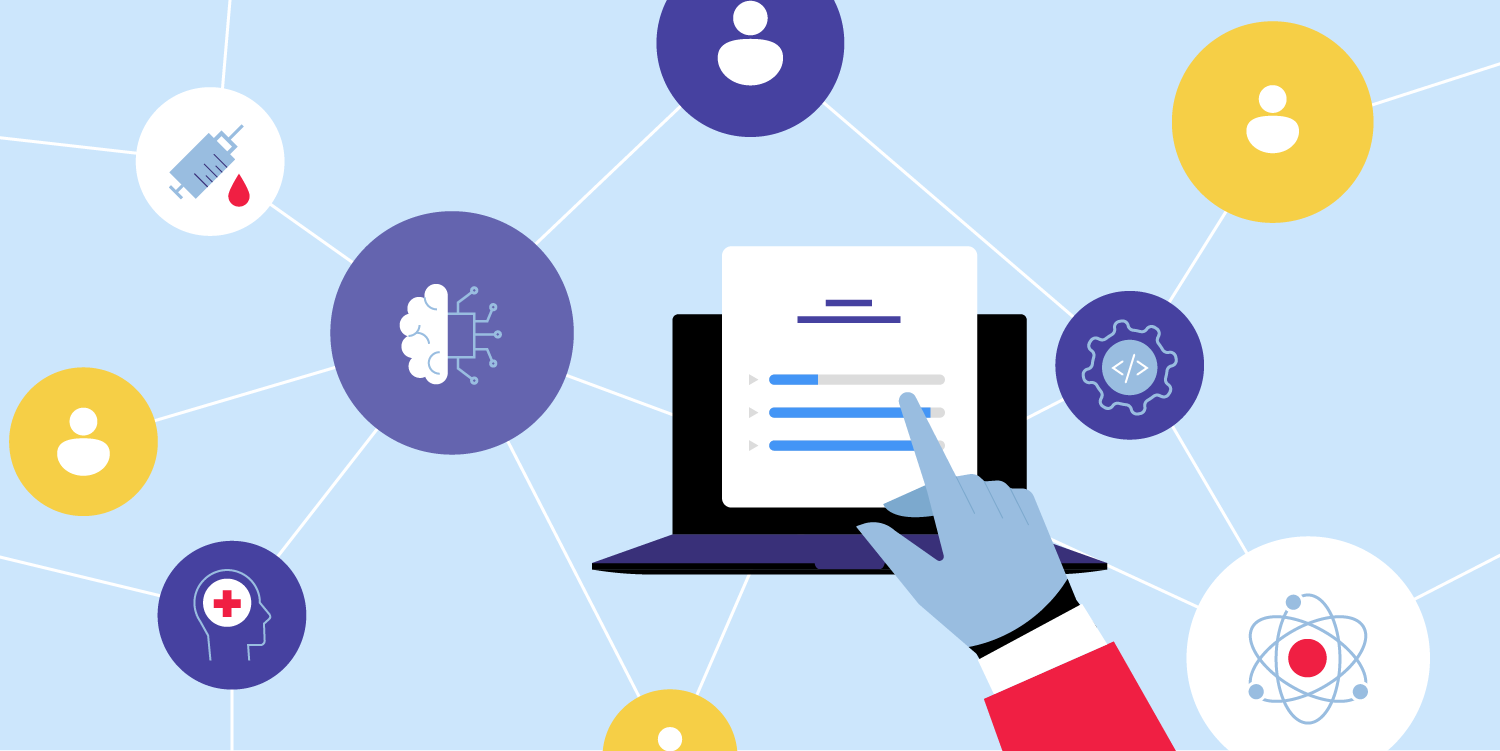How Workforce Planning Sets up Businesses for Success

Workforce planning expert Lauren Ramakrishna has written for top-notch publications such as Redbook, Cosmopolitan, and Refinery29.
The most lucrative, forward-thinking businesses do not achieve their success by accident. Their leaders understand the importance of strategic preparation, including workforce planning, which helps companies identify the workforce they want and how to get it.
The objective of workforce planning is “to get the right people in the right place and have a planning process for continuing to do that, including succession planning and talent management,” says HR authority and executive leadership coach Roxi Bahar Hewertson, author of Hire Right, Fire Right: A Leader’s Guide to Finding and Keeping Your Best People.
But tackling workforce planning is an ongoing full-scale change process. When done well, it can set up a company for success and head off challenges from future obstacles (like a pandemic, for instance).
“Everybody should be looking at their workforce, planning their workforce, and thinking about the future if they care to stay in business,” Hewertson says.
How Does Workforce Planning Work?
The US Office of Personnel Management (OPM) proposes the following model, which covers strategic direction through post-implementation monitoring. At a high level, workforce planning typically relies on these five steps:
- Set strategic direction
- Analyze workforce
- Develop action plan
- Implement action plan
- Monitor, evaluate, and revise
Think of these steps iteratively, rather than linearly—workforce planning is not a one-time event. Continual monitoring will encourage future adjustments.

1. Set Strategic Direction
The goal of this first step, according to OPM, is to align the workforce planning process with the work activities required to meet the company’s long-term strategic objectives and short-term business plan.
Strategic directions will vary greatly among companies, but one strategic direction could be diversifying the workforce’s skills, or culturally diversifying the workforce. For the latter, leaders need to decide on necessary steps: Do you need an internship, mentorship, or leadership program? multiple of the above?
No matter what the strategic direction is, Hewertson advises including stakeholders “and getting people on board with the vision.” As this change process begins, leaders must be clear about the process’s intentions, who is leading, and how change is going to happen. Some resistance is inevitable, but it is predictable and manageable if you continually involve and inform stakeholders.
While setting a strategic direction, note:
- Projected cash flow stability over the next one to seven years, including your organization’s ability to survive change (e.g., a decrease in demand, budget cuts, or strategic shifts)
- Relevant economic or political trends (e.g., recession, decline in demand, or industry disruptors)
- Short- and long-term impact your workforce strategy will have on the organization and its marketplace position
- Current or projected strengths, benefits, challenges, and barriers that may impede growth or organizational stability
2. Analyze Workforce
Once the strategic direction is set, analyze your current workforce resources and how you expect them to evolve.
A workforce analysis evaluates the workforce resources (labor and skills) available to your organization now. It also predicts how these resources will change over time.
This requires digging into the workforce data. Depending on your business strategy, you may need to look at:
- Existing employee data (pay rates of employees, job locations, and worker/manager ratios)
- Termination reports (the number of employees who have been laid off, let go, or transferred)
- Recruitment data, including referral sources segmented by worker quality, qualifications, and experience, and the recruitment strategies used to attract and retain talent
When you have a clear view of your current workforce, you can compare it against your strategic direction. The differences between the two are your gaps. Workforce planning can address those gaps through targeted recruiting, development, succession, and transition plans.
3. Develop Action Plan
Your workforce action plan is a list of tactics designed to:
- Close the gaps between your organization’s current circumstances and future goals
- Improve performance via new strategies for staffing, hiring and promoting, training and retraining, retaining, restructuring, contracting, and other strategies
- Secure and allocate the financial resources needed to follow through on your strategic direction
The plan should also cover how to implement the new strategies and assess progress after implementation.
Much like the strategic direction, it is vital to ensure all stakeholders are kept informed as action items are debated and decided. “If you do a top-down [workforce planning action plan], it will create all the resistance possible to the change plan,” Hewertson warns. “People naturally resist change unless they understand it, they’re engaged in it, they know what’s in it for them, and they trust the people who are making the change.”
4. Implement Action Plan
With financial resources in place, new and evolving roles outlined, and stakeholders throughout the company prepared, it is time to implement your action plan. Hewertson recommends tackling implementation in stages. Start with a “pilot plan” that implements your action plan in, for example, a single department rather than companywide.
Testing out your change process in this limited manner has two benefits:
- You get a chance to see your plan in action on a small scale, so you can make adjustments before going full-scale.
- You can prove to employees at all levels that the major change process will work, resulting in better faith in the process and a happier (and more productive) workforce.
5. Monitor, Evaluate, and Revise
Once your action plan is up and running, measure its performance. Check workforce growth against milestones and key performance indicators, and verify that gaps are addressed as expected.
“When implementing the plan, look for quick wins, and have real transparency in terms of what’s working,” Hewertson says.
Then, consider how to roll out your action plan in more departments. How do you need to adjust your strategies to meet the specific needs of each unit?
Monitoring progress is not a one-time step. In fact, it is likely you will need an employee (or many) fully committed to monitoring your workforce plan, and encouraging leaders’ buy-in to make changes as new needs arise. Thus, the workforce planning cycle begins again.
Helpful Workforce Planning Tools
During your initial workforce analysis, you will need a whole picture of the workforce you currently have in order to map against the workforce you need for your strategic plan. Look at these factors:
- Size. How many employees do you have, and how many will you need to hit your goals? Will you need them immediately, or is a phased implementation of your plan more reasonable? Where will these employees come from?
- Type. What types of employees do you have, and what roles and competencies will you need? software engineers? salespeople? copywriters?
- Experience. Are you looking for inexperienced employees you can train to do things your way, or experienced employees who can begin producing on day one?
- Skills. Do you have employees with the right skills who can produce the results needed with deep knowledge of why things work the way they do or how to address problems that arise?
Use HR dashboarding tools such as Microsoft Power BI, Sisense, datapine, Smartsheet, and Gusto for analytics monitoring, performance management, and management intelligence.
Hewertson notes that the Society for Human Resource Management has a lot of resources companies can use on their workforce planning journey, including interactive tools for workforce analysis, succession planning, and other proactive HR practices.
Individual Review: 9-box Grid
To monitor individual staffers, some companies use a 9-box grid as a tool to assess employees’ performance and potential. When managers formally review an employee, they rate them on scales that chart performance and potential. Doing so offers quick insight into how an employee is faring at the company and what steps you might need to take to boost productivity and retention.
Employees who score high on performance and have high potential for growth end up in the top-right corner of a 9-box grid (see the following example, adapted from Performance Culture). For employees in those boxes, your workforce plan might include incentives to retain them. Employees in the “Potential Gem,” “Core Player,” and “Solid Performer” cells may need mentoring or training to lift potential or performance. Employees in the bottom-left corner cells are lower performing and may need critical interventions.

The Whole Picture: Skills Matrix
A skills matrix chart is a visual tool that allows companies to determine where skill gaps exist, so they can fill those gaps through workforce planning. The following example (created using a template from Valamis) shows how a company can use skills analysis to rate skill coverage and proficiency in its current workforce.

Each employee receives a rating of 0 through 4 (“Awareness” through “Leading-edge expert,” per the key) for particular skills. The end of each row shows each employee’s overall proficiency level for the entire range of skills. At the base of each skill column is the percentage of coverage for those skills within the current workforce. Lower percentages of skill coverage in particular skills necessary for your organization’s success should prompt you to upskill existing employees or seek new talent that is more proficient in those areas.
How to Achieve Workforce Planning Success
Perhaps the most important step in this long change process is ensuring that the human resources department becomes trained to encourage retention. Getting the right employees in the right place is important, but that only helps if the company can retain those employees.
“When organizational development and effectiveness are strong, then you’ve got a chance,” Hewertson says. HR needs to help leaders figure out not only how to recruit the right people, but also “how you bring them on, how you manage their performance going forward, and how to engage them on an ongoing basis,” Hewertson advises.
Data is an important driver of strategic direction and action plans, but it is the people who create the culture that can lead to workforce planning success.

Workforce planning expert Lauren Ramakrishna has written for top-notch publications such as Redbook, Cosmopolitan, and Refinery29.





